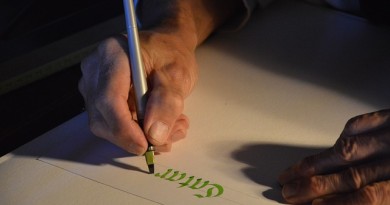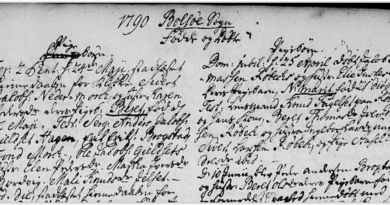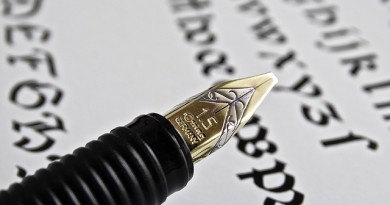How to read Gothic handwriting – 3
I am continuing my quest at getting better at reading Gothic handwriting. In this part I will try to group the letters together and look at differences and similarities.
Before you get going on this part, I hope you have had the opportunity to study the two first parts in the series on Gothic handwriting. These are found here:
https://martinroe.com/blog/index.php/2016/02/02/gothic-handwriting/
https://martinroe.com/blog/index.php/2016/02/06/gothinc-handwriting-2/
As I have pointed out in the previous installments, this is my first serious journey into Gothic handwriting and I am a novice like you. I ask you to study the sources (that are available to you) I list for these articles.
After having studied, and tried to recognize separate letters, we see that several of them can be hard to tell apart. I have found Geelmundens (2015) categorisation very usefull:
Small round letters
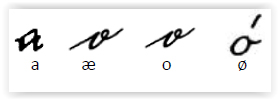
The small round letters are the letters that raise to the first level above the line. The letters a æ o ø can easily be mixed up.These letters are sometimes written without the circle fully closed. This makes them easy to mix up with the peaked letters.
Small letters with two peaks

These are the letters e n u and nn. We see that the e and the n looks similar. The e tends to be a little narrower than the n.
The u are normally written with a curved dash (-) above it. Both n and m may also be written with dashes above. This means that the letter is doubled, meaning nn or mm. It should be noted that the letters u and v where interchangeable. The pronunciation depended on the context.
Small letters with one and three peaks
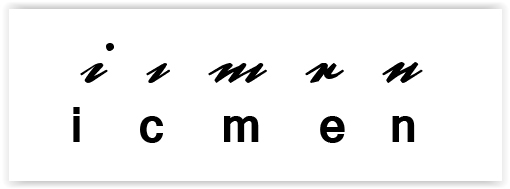
These letters are the i c m e and n. Here we see that i and c are easy to mix up. They are normally told apart by the dot above the i. Note that the dot can be missing or be off to either of the sides. This is true for any dots, dashes or umlauts that should appear above the letters.
The letters i and j were the same letters and interchangeable. The pronunciation depended of the context.
The m can easily be confused with a combination of i and c and a letter with two peaks like n, e or u. You need to look for the dot above the i. Also keep in mind that the n and m can be written with a dash about to indicate a doubling of this letter (nn,mm).
The letters r and v
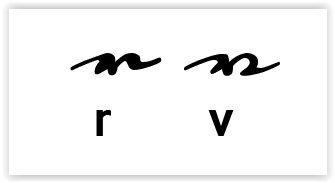
The letters r and v can easily be mixed up. The only way to keep these apart is to look at the ending of the letter. The ending of the r is a line stretching to the right at the first level above the writing-line. The ending of the v is a line descending from first level above towards the writing-line.
Letters that goes below the writing line
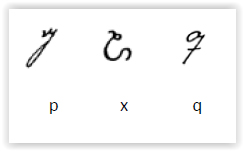
The letters p,x and q can be easy to mix up. They all go below the writing-line. There are some details that show the differences. The p should have a loop below the writing line. The x has no loop, but the line curves towards the right. The q has no loop below the writing-line. It should have a crossbar though. Sometimes this crossbar is missing and sometimes the line below is continued out towards the right with no loop.
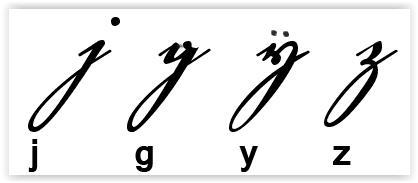 The letters j g y z also go below the writing-line. These letters can be easy to mix up. Sometimes the circle in the g may be written very small. Also the circle may not be fully closed making it look like an y. The y should have umlaut (“) above it, but as noted before, the umlaut can be missing. A sloppy written z may look like a y without the umlaut.
The letters j g y z also go below the writing-line. These letters can be easy to mix up. Sometimes the circle in the g may be written very small. Also the circle may not be fully closed making it look like an y. The y should have umlaut (“) above it, but as noted before, the umlaut can be missing. A sloppy written z may look like a y without the umlaut.
Tall letters

The letters b l t d and k all raise to the second level above the writing-line. The b, l, and t does look like their modern (latin) versions.
Sometimes the letter k looks like its modern version. Other times the letter k may look like the Capital letter L.
Letters that go both high and low
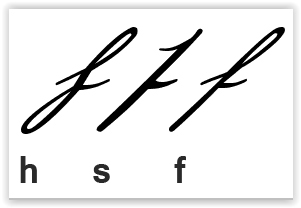
The letters h, s and f goes to the second level above, and stretches below the writing line. Their basic form has distinctions, but it is normally very difficult to keep these letters apart in the records. Which letter we are dealing with must be read from the context. the f often looks like its modern version with loops above and below that are tied together with a small loop in the middle. The h is written with loops, but they may not be tied together in the middle. The s is often written without loops neither above or below the writing line. The line below returns to the writing-line towards the right, directly linked to the next letter.
Well, these strange letters are beginning to make some sense. I hope you will be back. In the next installment I will start to put the letters together to form words.
Sources:
Geelmuyden, Knut: “Gotisk skrift – En kort veileding i lesing av gamle kilder” Bergen 2015 Available for download as PDF. (in Norwegian)



